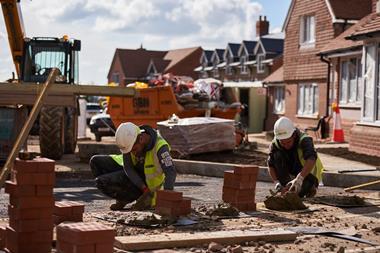To build or not to build? That is the question - not for Hamlet, of course, but for real estate investors. In the private rented sector (PRS), the answer is a resounding yes.

With the UK general election behind us - and rent controls off the agenda in England - activity is picking up again in the market. There is more investment coming in and more competition. Those investors who are only willing or only able to invest in standing stock are going to find it increasingly difficult to access the PRS market on the sizeable scale that institutions want.
There is a solution - to create such stock by partnering with developers, government-backed entities, local authorities, housing associations or housebuilders. Historically, institutional investors haven’t had much of a relationship with housebuilders (except, perhaps, as shareholders), but in the brave new world of private rented residential, such a partnership makes a lot of sense.
For housebuilders, one advantage of PRS is that homes can be let much faster than they can be sold. People can move in more quickly, bringing life and vitality into the whole development. That in turn creates a sense of place and community, helping drive commercial activity (restaurants, cafés, shops) and potentially boosting the appeal of those areas of the scheme that are reserved for the homeowner market.
Traditionally, housebuilders have opted for large schemes and then parcelled off bits of land to sell to their rivals to help fund the project. While the different housebuilders would offer different products, this still created competition as all the homes were ultimately up for sale to homeowners. By partnering with a PRS investor instead, housebuilders can avoid such competition, while securing investment that will ultimately help them build more homes.
For the institutional investor, meanwhile, the key advantage of such a partnership is access to a pipeline of assets at a time when there is a very limited amount of large-scale, ready-built quality sustainable stock available to purchase. Development does come with a degree of risk, but this can be significantly reduced by checking the covenants of the developer and the construction firm, as well as by working with counterparties on fixed-price contracts backed up by various guarantees and warranties. Getting involved in the development stage can also provide the opportunity to influence the design and ensure the building is tailor-made for rent.
Of course, the drivers of the rental market can vary from those of the for-sale segment, so it is vital to assess the merits of each individual opportunity and its capacity to deliver the kind of income-driven, long-term returns demanded by institutional investors.
For example, we recently invested in a scheme in Bath Riverside. The partnership with the housebuilder, Crest Nicholson, was important, but location was also key. Bath is a world heritage site, so building activity is strictly limited and the city therefore suffers on the supply side, much like London. Demand, meanwhile, is strong with high levels of employment fuelled by two universities and a thriving tourism industry. The location is set to become yet more attractive with the electrification of the train line, which will cut down the journey time to London to around an hour. Together, those factors mean that the long-term forecast for rental growth is strong, which makes it an attractive investment for institutions.
So, ‘location, location, location’ remains a very important mantra in resi. But ‘development, development, development’ is also key. By partnering with housebuilders, developers and others, we can help meet the growing demand for housing in the UK and develop a world-class private rented sector.
Alex Greaves is residential fund manager at M&G Real Estate































No comments yet